Samaaro + Your CRM: Zero Integration Fee for Annual Sign-Ups Until 30 June, 2025
- 00Days
- 00Hrs
- 00Min
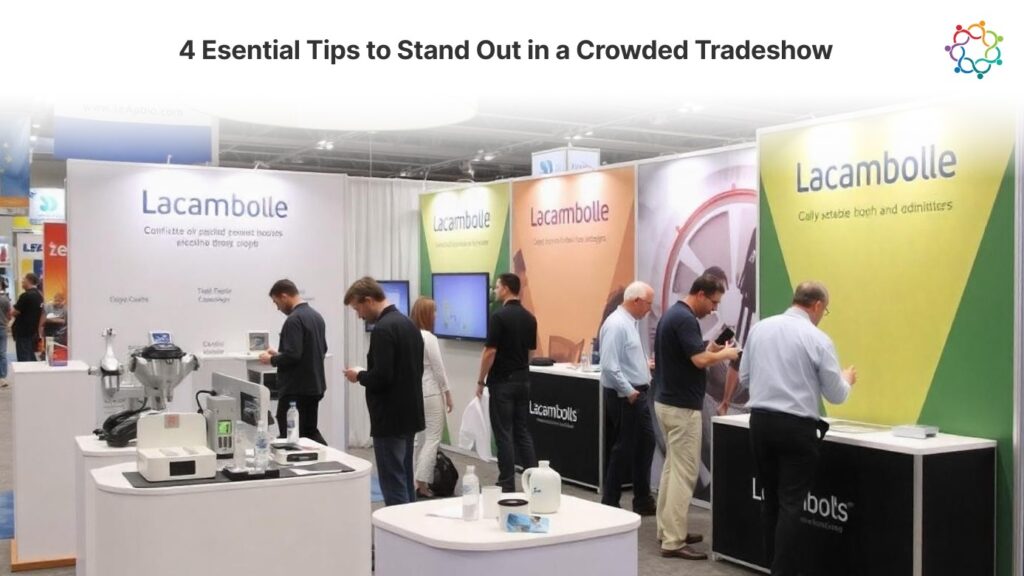
Tradeshows offer a unique opportunity for businesses to showcase their products or services, network with industry professionals, and generate leads. However, with thousands of exhibitors vying for attendee attention, it’s essential to have a well-crafted marketing strategy to stand out and achieve your goals. This comprehensive blog will provide you with valuable insights and tips to ensure your tradeshow participation is a resounding success.
Effective planning and preparation are essential for a successful tradeshow experience. This section talks about crucial points for ensuring that your tradeshow participation is well-planned and executed
To ensure your tradeshow participation is successful, it’s essential to define clear and specific goals. Identify what you hope to achieve, such as increasing brand awareness, generating leads, building relationships, or showcasing new products. These goals should align with your overall business strategy and be measurable, so you can track your progress and evaluate success. Consider setting SMART goals (Specific, Measurable, Achievable, Relevant, and Time-bound) to ensure they are focused and actionable.
Identify your ideal attendees by considering their demographics, interests, and pain points. This information will help you tailor your marketing efforts and create content that resonates with them. You also need to research past attendee data to understand their preferences and behaviors and use this knowledge to inform your tradeshow strategy.
Select a tradeshow that aligns with your industry and attracts your target audience. Consider factors such as the tradeshow’s reputation, size, and focus. Additionally, evaluate the location and timing of the event to ensure it is convenient for your target audience and aligns with your business calendar. It is important to review past attendance, exhibitor feedback, and event success metrics to make an informed decision.
Design a booth that stands out and attracts attention. Use eye-catching visuals, interactive elements, and clear signage to create a memorable experience for attendees. Plus, optimize your booth layout for maximum visibility and ensure it aligns with your brand identity. Consider incorporating interactive displays, demonstrations, or activities to engage the attendees and showcase your products or services.
Equip your staff with the knowledge and skills they need to not only succeed at the tradeshow but also represent your brand effectively. In addition to providing them with in-depth training on your products or services, make sure they are well-versed in effective sales techniques and excellent customer service. Furthermore, ensure they understand your company’s values and culture so they can represent your brand positively.
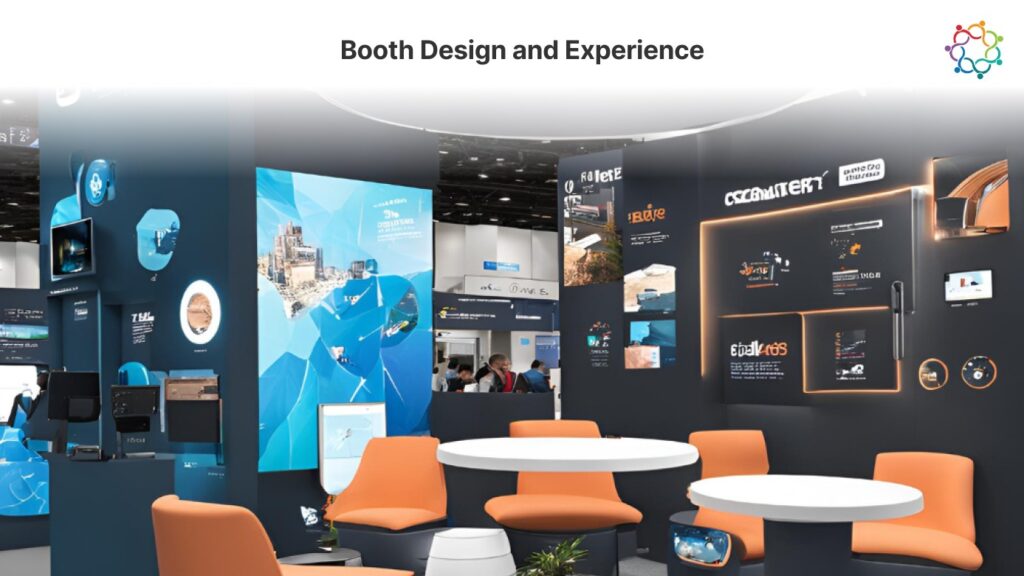
A well-designed and engaging booth is essential for attracting attendees and making a lasting impression at a tradeshow. This section will discuss the key factors to consider when designing your booth, incorporating interactive elements, and creating a welcoming atmosphere that encourages attendee engagement.
Design your booth to be visually appealing and consistent with your brand identity, using eye-catching graphics, branding elements, and lighting. At the same time, ensure the layout is practical and efficient, allowing for easy movement and interaction. Consider factors such as traffic flow, product display, and seating areas to create a welcoming and inviting atmosphere.
Incorporate interactive elements like virtual reality (VR) or augmented reality (AR) to provide attendees with unique and engaging experiences. For example, you could use VR to showcase product demonstrations or AR to allow attendees to visualize products in their own space. Additionally, digital screens can be used to display product information, promotional messages, and multimedia content, capturing attention and providing valuable information. Finally, developing a dedicated event app can enhance the attendee engagement by offering personalized recommendations, networking tools, and real-time updates.
To attract and retain attendees, offer valuable content that goes beyond simply showcasing your products or services. Consider organizing workshops, seminars, or panel discussions on relevant topics, inviting industry experts to share their knowledge, or offering product demonstrations to showcase your offerings in action. By providing attendees with valuable content, freebies, and giveaways, you’re more likely to capture their interest, incentivize engagement, and create a memorable experience.
Ensure your booth staff is well-trained, knowledgeable about your products or services, and approachable to the attendees. Provide comfortable seating areas and amenities such as refreshments or charging stations to enhance the attendee experience. Make an effort to engage with each attendee individually, offering personalized recommendations or assistance as needed.
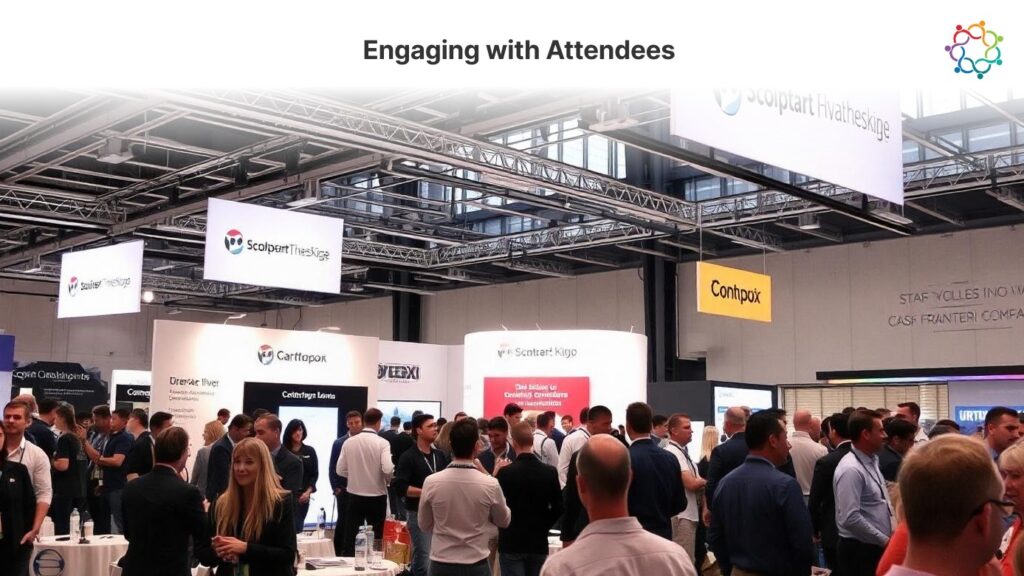
Engaging with attendees is a crucial aspect of a successful tradeshow experience. This section will explore strategies for engaging with attendees and maximizing your booth’s impact.
Actively listen to the attendees’ questions and concerns to effectively engage with them. Also ask open-ended questions to encourage them to share their experiences and perspectives and adapt your communication style to suit different individuals and their interests. By demonstrating genuine interest, encouraging open dialogue, and tailoring your approach, you can create a more engaging and personalized experience for the attendees.
Consider organizing social gatherings or receptions, introducing attendees to relevant industry professionals or potential partners, and creating a welcoming and inclusive atmosphere to facilitate networking among attendees. These strategies can help attendees connect with like-minded individuals, build relationships, and explore potential collaborations.
Use a customer relationship management (CRM) system to collect attendee data efficiently and ethically and an event app to gather data in real-time. Offer incentives, such as discounts or giveaways, in exchange for contact information. And most importantly, ensure that the attendee data is collected and used in compliance with privacy regulations.
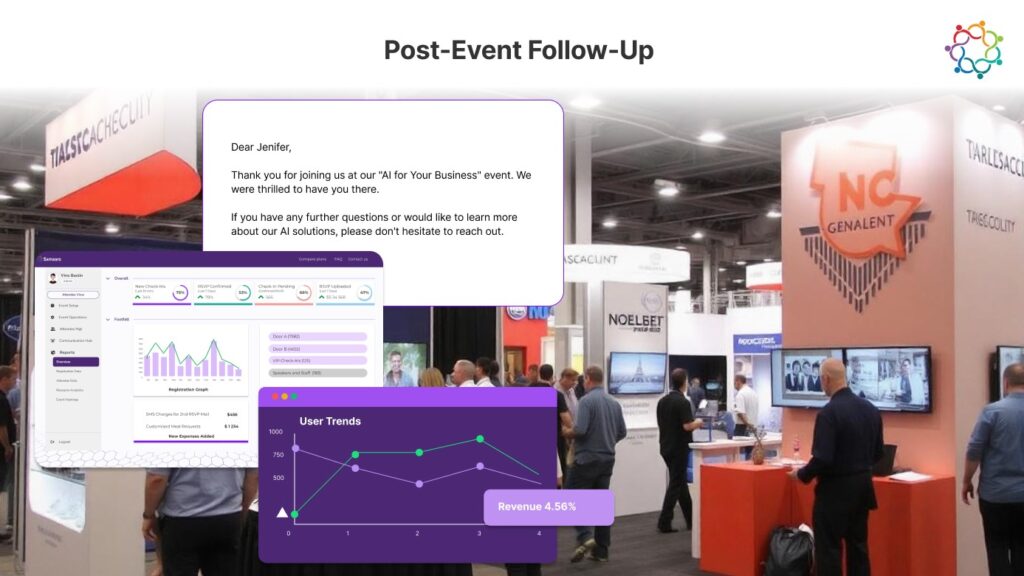
A successful tradeshow doesn’t end when the event concludes. Effective post-event follow-up is crucial for nurturing leads, building relationships, and maximizing your return on investment. This section will discuss the importance of sending thank-you notes, following up with potential customers, and analyzing your event’s performance to inform future strategies.
Send personalized thank-you notes to attendees, addressing them by name and referencing specific interactions or conversations. Don’t forget to recap the highlights of your interaction and the value they gained. Offer additional resources, such as whitepapers, case studies, or blog posts, to continue the conversation. Finally, include a link to a short survey to gather attendee feedback and insights for future improvements.
To maximize the potential of leads generated at your tradeshow, segment them based on their level of interest and potential value. This will help you tailor your follow-up efforts and provide the most relevant information and resources. Next, create personalized follow-up plans for each lead segment, including specific actions, timelines, and content to share. Then, provide value to leads by offering additional information, resources, or invitations to future events. Lastly, track lead engagement and progress through the sales funnel to measure the effectiveness of your follow-up efforts.
Track key performance indicators (KPIs) such as booth traffic, lead generation, attendee engagement, and return on investment (ROI) to measure the success of your tradeshow participation. Compare these results to your pre-event objectives to identify areas of strength and weakness. Subsequently, analyze the feedback from attendees and staff to gain valuable insights for future events. Remember to share your findings with your team to inform future marketing strategies and optimize your tradeshow presence.
By following these strategies and continuously adapting your approach, you can maximize your tradeshow participation and achieve your business goals. Remember, a successful tradeshow experience is about more than just attending the event. It’s about effectively engaging with your target audience, building relationships, and driving results. Book a demo and start your free trial of Samaaro’s platform today to enhance your tradeshow strategy and drive even greater success!

Built for modern marketing teams, Samaaro’s AI-powered event-tech platform helps you run events more efficiently, reduce manual work, engage attendees, capture qualified leads and gain real-time visibility into your events’ performance.
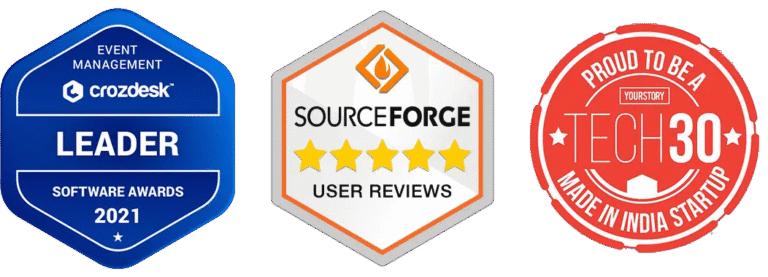
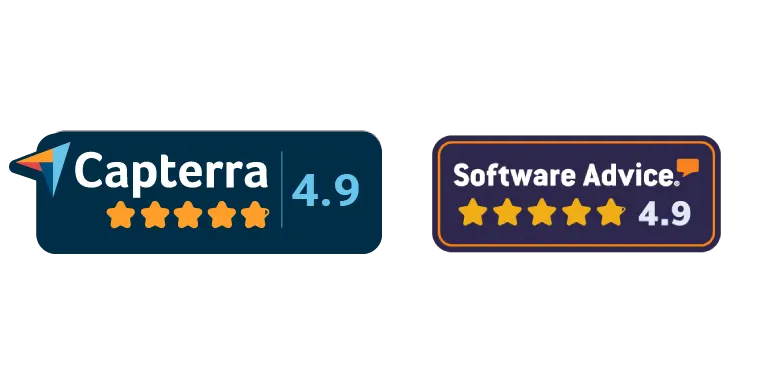
© 2025 — Samaaro. All Rights Reserved.